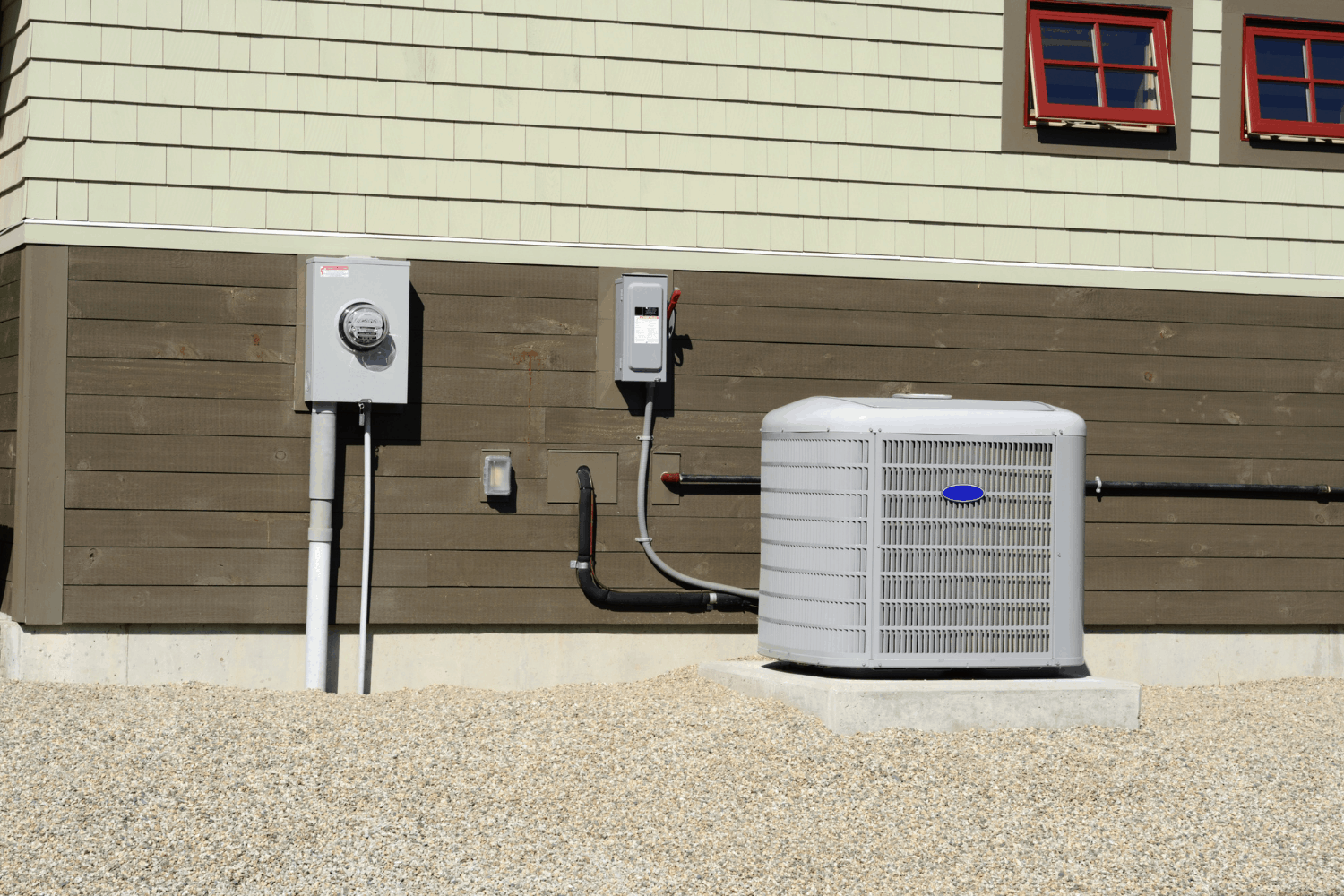For one reason or another, some areas in our heated or air-conditioned homes are warmer or cooler than others, making those areas uncomfortable. There can also be concerns about mold when a home or building is not occupied for several weeks or is not getting enough ventilation. Is it okay to close HVAC dampers?
It is okay to close HVAC dampers. You will first need to know the different kinds of dampers, what each is designed to do, and what you are trying to accomplish. Some are designed to control temperatures at different indoor locations. Others are used to control the amount of air coming inside.
The following information will help you decide when to adjust an HVAC damper, where to find it, and which kind needs adjusting for which purpose. Step-by-step instructions are also included in adjusting duct dampers that control different areas in the home, with an added discussion about an easier and more efficient way this need can be accomplished.
What Are Dampers?
It depends on their purpose. Dampers used to control temperatures in different areas of a home or building are duct dampers, called volume balancing dampers or balancing dampers. They are metal valves or plates located inside ducts near the central unit and far from the registers or vents where the air enters a room.
They come in different designs, but according to EB Air Control, Inc., the most commonly used HVAC system is the Louver version. However, those that are manually operated are simpler and have a connected lever or handle found on the outside of the duct, which is used to open or close the damper, as shown in this video:
How Do You Locate the Levers on Manually Controlled Duct Dampers?
Not all HVAC systems have them, but Life Savvy explains how you can find out. First, you should know that dampers may not have been added to the HVAC system if you have a newer home. Older homes that have been remodeled may have had damper access covered with drywall.
But if you do have them, Life Savvy provides a good photo, and so does this YouTube video below:
Both will show you what the levers look like and where they are usually located, usually in an attic or a basement.
How to Adjust Your Duct Dampers for Optimal Room Comfort
After locating the levers or handles that control your HVAC dampers, several steps are involved in the trial-and-error process needed to get the area temperature-control you desire. Life Savvy provides a comprehensive step approach as follows:
- Determine which damper controls which area of the house. This is where it helps to have someone working with you and have a permanent black marker of some kind on hand.
- Open all the vents in the house.
- Pick one damper, and try to see where its duct leads. Have someone go to that room if you have a helper. If not, you will be going back and forth.
- Use the thermostat to make the HVAC blower come on.
- Close the damper by turning the lever so that it is perpendicular to the duct’s length.
- Check, or have a helper check, the area you believe the duct serves for minimal or absence of airflow. If air is fully flowing in, find the correct room or area where the airflow is cut off.
- When you find the right area, go back and reopen the damper to double-check the location.
- Use the marker to label the name of the proper room or area you just confirmed as its connection on the duct beside the damper lever.
- Repeat the steps above until you have labeled all the dampers with names of their corresponding rooms or areas.
- Adjust dampers according to the season and the system being used.
- When running the AC, close or partially close dampers on ducts that cool the lower floors (first floor and basement). This will send more cool air to the upper floors. Leave wide open dampers to ducts sending air to the top-level floor/s.
- If there is just one floor, you can still open dampers to bedrooms or other areas you want to be cooler and close fully or partially duct dampers directing air to other areas.
- When running the heat in winter, adjust the dampers so that less warm air flows into the upper levels of the house or into areas on one level that are warmer. Leave dampers to lower floors open.
- Monitor and test the changes you’ve made to see if you might want to partially open a damper you have completely closed or vice versa.
- Take note of the ideal lever location for each damper and label the position according to whether it’s for heat or AC, so you won’t have to go through the process again.
- Post a reminder somewhere you’ll be sure to see it (like the thermostat) that you need to move the damper levers when you change from AC to heat or heat to AC.
Is There an Alternative Way to Spot-Control Home Temperature?
Yes, there is an easier way. Some larger homes built today have multiple systems connected to different ductwork, with dampers controlled automatically. But if your system is not already one of these zone control systems, it could be very costly to replace it with a new one. However, some sources say you can retrofit a current HVAC system to work like a zoned system.
Bob Vila says that forced-air systems can “create multiple zones by using two or more thermostats connected to a master control panel. The control panel opens and closes dampers that are installed within the ductwork.
The following video shows how it’s done:
The U.S Department of Energy suggests using room heaters as an inexpensive way of providing a form of zone heating to supplement forced air systems.
Don’t Confuse Dampers With Air Vents
Some people confuse dampers with the louvered air vents located in ceilings, walls, or floors, from which heat or cool air enters the room. Although you can open or close these to make a particular room or area of a room warmer or cooler, doing so is not as effective as adjusting the duct dampers.
In fact, this is probably not a good idea because it can cause too much static pressure to build up in the air ducts, which can overwork and ultimately damage your system and create other unwanted effects in the process.
Also, closing doors and cutting off heat from any part of your home can be a bad idea because, according to the U.S. Department of Energy, this could cause condensation to “form on cold inside wall surfaces leading to mold.” It could lower temperatures below 50° F (10° C), which can cause pipes to freeze and burst.
What Is an Outdoor Air Damper?
Another important damper, especially for schools and office buildings, is an outdoor air (OA) damper. According to Occupational Health and Safety (OSHA), the OA protects the indoor air quality of a building, if properly installed and maintained, by keeping snow and rain from getting into the air-handling system, and it “will stop the flow of air into the system when it is closed.”
The EPA says that closing these dampers and stopping the flow of air coming into the system is especially important for school buildings during the summer to keep humidity out and prevent mold growth.
But it’s also very important that they do not remain closed when the building is occupied. This is because they allow the air handling system to bring in enough fresh outdoor air to dilute contaminants “generated by the building, its furnishings and its occupants” when it is opened.
Final Thoughts
Many sources say that finding a way to zone control your home or building will save energy and heating and cooling costs. So, you can follow the steps to close or adjust your HVAC system’s dampers properly, or if your system doesn’t have dampers, they can be added, and your system retrofitted to control temperature zoning automatically.
However, you might want to consider some cautionary advice from PV Heating & Air, for one, before making changes to your current system.
Also, as the Department of Energy suggests, you can easily create zoned temperature control by adding room heaters (but only those that don’t create toxic fumes or fire hazards). You might do well to invest in this Drolet EPA-Certified High-Efficiency Wood Stove, also one of the Department of Energy’s recommendations.
Sources
- EB Air Control: Types of Dampers in HVAC
- YouTube: Reliable Heating and Air: Room Temperature Control with a Manual Damper
- LifeSavvy: House too Hot or Cold? Adjust Your HVAC Dampers for Year-Round Comfort
- C and K: How to Adjust an A/C Damper
- YouTube: How to: Adjust Your Dampers
- Occupational Health and Safety: Outdoor Air Damper Use in Hot and Humid Climates
- PV Heating & Air: Should You Add Zones to Your Existing HVAC System?
- Arzel. Zoning Technology: Advancing Toward Energy Efficiency with Zoning
- PV Heating & Air: Should You Close Your Air Supply Vents? Probably Not.
- AC & Heating Connect: What is Your HVAC System’s Blood Pressure?
- Air America: What Are HVAC Dampers and How to Use It [sic] Effectively
- U.S. Department of Energy: HVAC Guide: Zoning
- Bob Vila: Control Temperatures and Save Energy with Zoned Heating Systems
- How Stuff Works: System Zoning
- YouTube: Retrofit Zone Damper Installation
- EPA: Moisture Control, Part of Indoor Air Quality Design Tools for Schools
- EPA: Building Codes and Indoor Air Quality
- EPA: Heating, Ventilation and Air-Conditioning Systems, Part of Indoor Air Quality Design Tools for Schools

